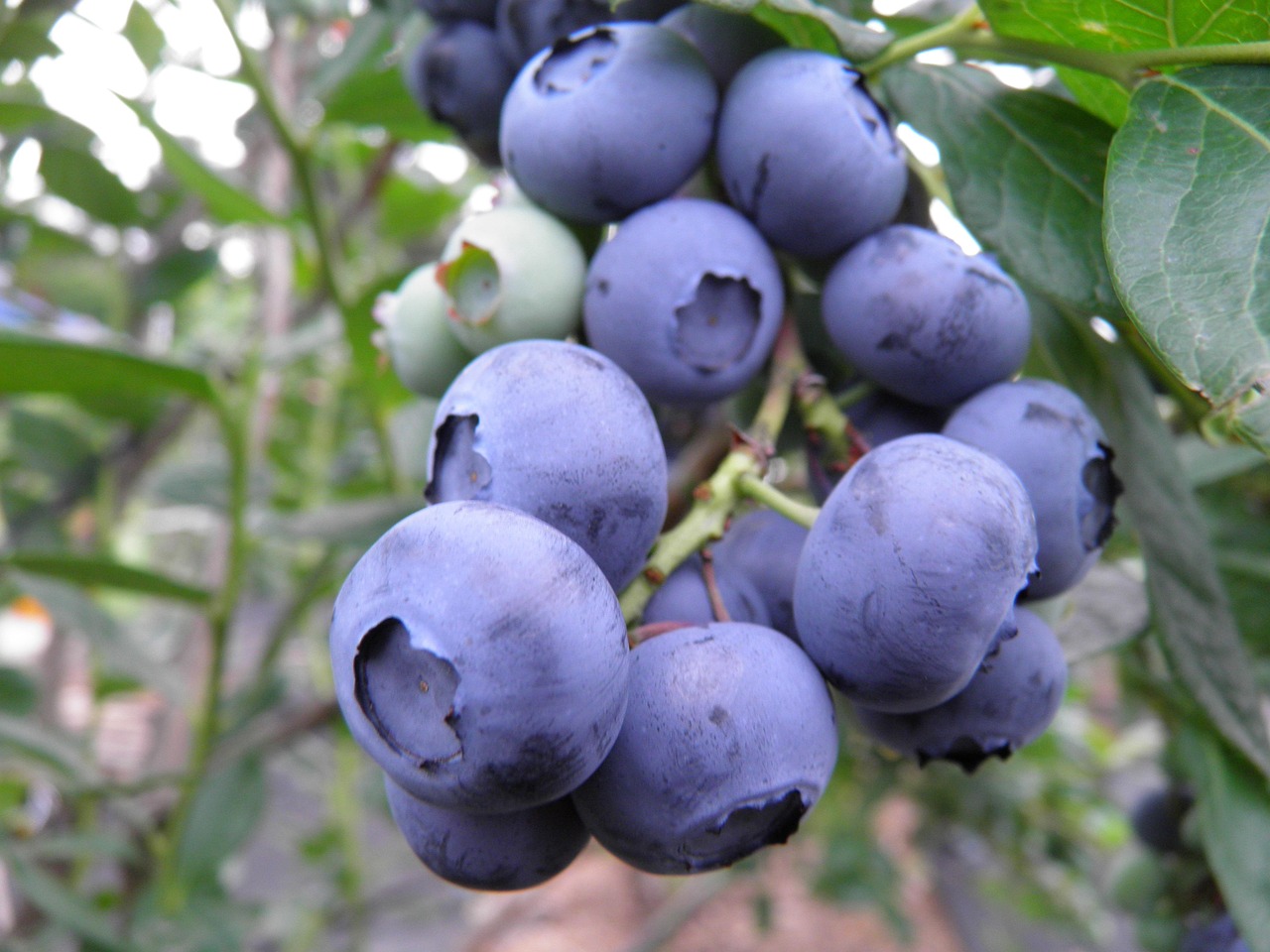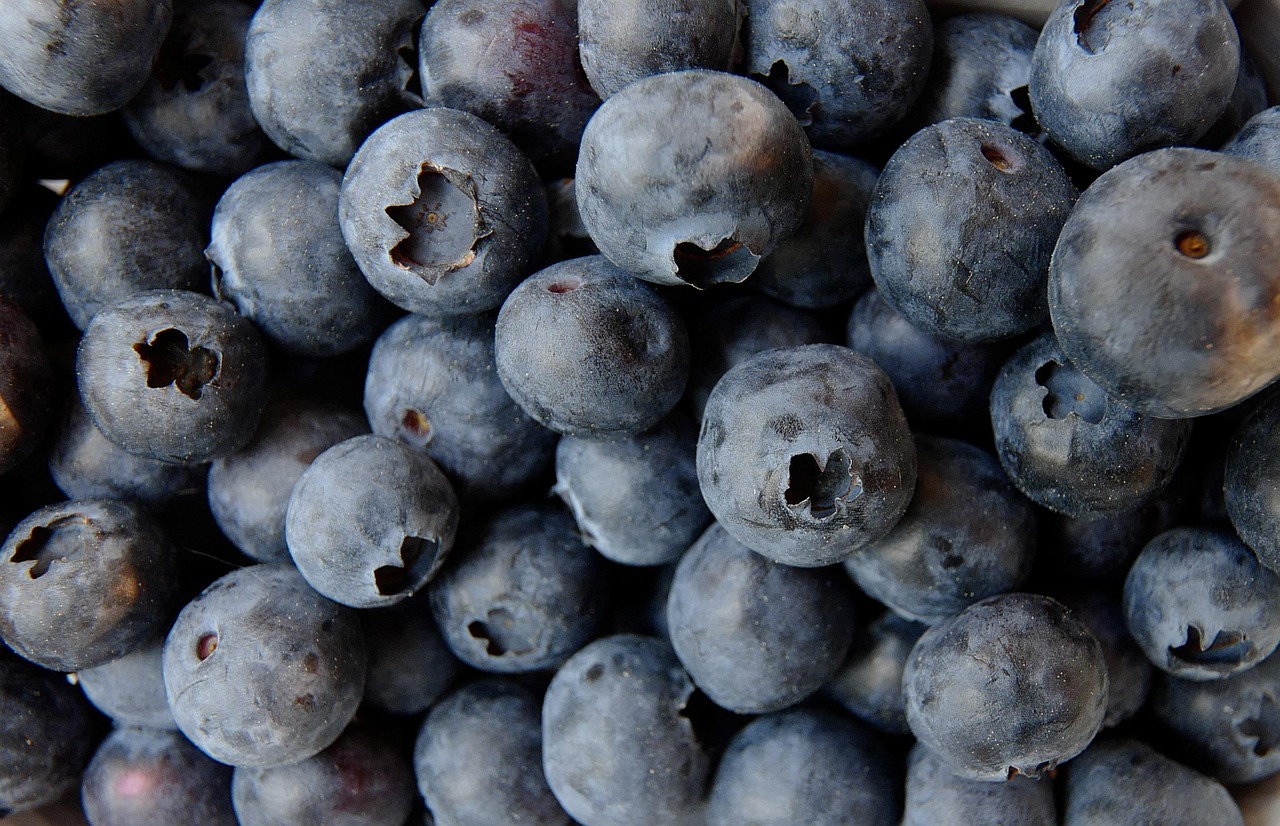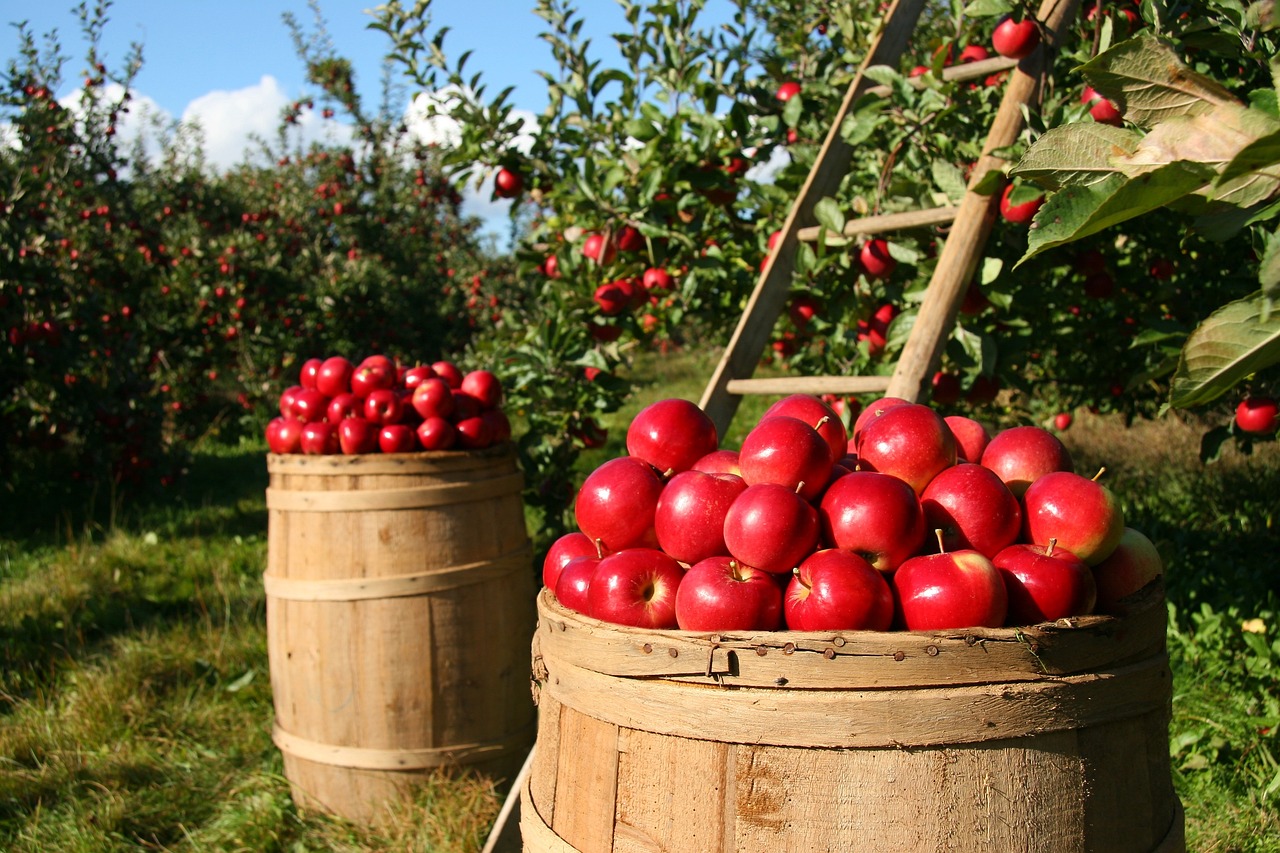Pruning blueberry orchards is essential for promoting healthy growth, increasing fruit yield, and ensuring seasonal success. Proper techniques improve air circulation and sunlight penetration, leading to vigorous plants and better fruit quality.
Blueberries are not only delicious but also packed with nutrients. They thrive in well-drained, acidic soils and require specific care throughout their growing season. One of the most important practices for maintaining a productive blueberry orchard is pruning. This process helps shape the plants, encourages new growth, and enhances fruit production.

Understanding when and how to prune blueberries can significantly impact the health of the plants and the size of the harvest. Without proper pruning, blueberry bushes can become overcrowded, leading to poor air circulation and increased susceptibility to diseases. Additionally, neglecting to prune can result in smaller berries and reduced yields.
Importance of Pruning Blueberry Bushes
Pruning serves multiple purposes in a blueberry orchard. Here are some key reasons why it is vital:
- Stimulates Growth: Pruning encourages the growth of new shoots, which are crucial for producing fruit.
- Improves Airflow: By thinning out crowded branches, pruning helps reduce disease risk.
- Enhances Sunlight Exposure: Properly pruned bushes receive better sunlight, leading to more robust fruit development.
- Maintains Plant Shape: Regular pruning helps keep bushes manageable and aesthetically pleasing.
- Increases Yield: Well-pruned bushes tend to produce larger quantities of fruit.
The timing of pruning is equally important as the technique. Most growers recommend pruning in late winter or early spring when the plants are still dormant. This timing minimizes stress on the plant and allows for vigorous growth once the growing season begins. However, specific pruning methods may vary based on the variety of blueberries being cultivated.

Types of Blueberry Pruning Techniques
There are several techniques that can be utilized when pruning blueberry bushes. Each method serves a unique purpose and can be tailored to fit the specific needs of your orchard.
1. Renewal Pruning
This technique involves removing older canes to encourage new growth. Typically, older canes will be thicker and less productive, while younger canes will be more fruitful. By cutting back older canes, you allow more energy to be directed toward younger shoots.
2. Thinning Pruning
Thinning involves selectively removing branches that are overcrowding the bush. This method helps improve airflow and sunlight exposure. Aim to remove about one-third of the total branches annually to maintain a healthy balance.

3. Heading Back
This technique is used to reduce the height of the bushes and encourage bushier growth. By cutting back the tips of canes, you stimulate lateral branching, which leads to a fuller plant structure. This is particularly useful for maintaining the desired height of your bushes.
Pruning Schedule for Blueberries
A well-planned pruning schedule is essential for maximizing the health and productivity of your blueberry orchard. Below is a simple table outlining a recommended pruning schedule:
| Month | Activity | Description |
|---|---|---|
| January – February | Pruning | Prune dormant bushes before new growth begins. |
| March – April | Fertilizing | Apply fertilizer after pruning to promote new growth. |
| May – June | Pest Management | Monitor for pests and diseases; take action if necessary. |
| July – August | Harvesting | Harvest ripe blueberries and enjoy your crop. |
| September – October | Fall Care | Prepare plants for winter; mulch if necessary. |
Following this schedule allows for optimal care of your blueberry bushes throughout the year. Regular maintenance ensures that your plants remain healthy and productive, setting you up for seasonal success.

Understanding these core practices will provide a solid foundation for your blueberry orchard management efforts. Each pruning session contributes to the long-term health and productivity of your plants, making it an essential task for every grower.
Best Tools for Pruning Blueberry Bushes
Having the right tools is essential for effective pruning. Using the appropriate equipment not only makes the task easier but also helps ensure clean cuts that promote healthy growth. Here are some commonly used tools for pruning blueberry bushes:
- Hand Pruners: Ideal for cutting small branches and canes. Look for sharp, bypass-style pruners for clean cuts.
- Loppers: These are great for thicker branches that are too big for hand pruners. They provide extra leverage.
- Pruning Saw: For larger, older canes, a pruning saw can make the job easier and more efficient.
- Gloves: Protect your hands from thorns and sharp edges while working.
- Safety Glasses: These are recommended to protect your eyes from flying debris during pruning.
Maintaining your tools is also critical. Ensure they are clean and sharp before use. This will help prevent disease transfer between plants and ensure smooth cuts that heal quickly.
Understanding Blueberry Growth Habits
To effectively prune blueberry bushes, it is important to understand their growth habits. Blueberry plants typically develop in cycles, resulting in different growth patterns over the years. Here are some key points to consider:
- Canes: Blueberries produce new canes each year, which are critical for fruit production. Older canes (more than five years) tend to produce less fruit.
- Flowering and Fruiting: Blueberries generally flower in spring. Fruit forms on one-year-old wood, so maintaining a balance of old and new canes is vital.
- Resting Phase: After harvesting, blueberry bushes enter a resting phase. This is an ideal time for light pruning to prepare for the next growing season.
By understanding these growth habits, you can make more informed decisions about which canes to prune and when to perform these tasks. Properly timed pruning aligns with the natural cycles of the blueberry plant, enhancing overall productivity.
Common Mistakes in Pruning Blueberries
Even experienced growers can make mistakes when it comes to pruning blueberry bushes. Recognizing common pitfalls can help you avoid them and ensure successful pruning.
- Pruning at the Wrong Time: Pruning during the wrong season can stress the plant or decrease yield. Always prune during dormancy.
- Over-pruning: Removing too many canes can lead to reduced fruit production. Aim to remove only one-third of the oldest wood each year.
- Neglecting to Clean Tools: Failing to sanitize your tools between plants can spread diseases.
- Ignoring Plant Health: Always check for signs of pests or diseases before pruning, as this can inform your approach.
Avoiding these common mistakes will help promote a healthier orchard and a more abundant harvest year after year.
Signs Your Blueberry Bushes Need Pruning
Regular observation of your blueberry bushes will help you determine when they require pruning. Here are some signs that indicate it’s time to prune:
- Crowded Canopy: If you notice that branches are overlapping significantly, it may be time to thin them out.
- Dead or Diseased Wood: Any dead or diseased branches should be removed immediately to prevent disease spread.
- Poor Fruit Production: If your bushes produce smaller or fewer berries, they may need rejuvenation through pruning.
- Weak Growth: Stunted or spindly growth can indicate that some branches are competing for resources and need thinning.
By recognizing these signs early, you can take action to maintain the health and productivity of your blueberry bushes.
The Role of Fertilization in Pruning Success
Fertilization plays a crucial role in the success of pruning efforts. After a pruning session, providing the right nutrients helps support new growth. Here’s how fertilization complements pruning:
- Nutrient Boost: Fertilizers supply essential nutrients that promote robust new growth following pruning.
- Soil Health: Healthy soil encourages strong root systems, which leads to better fruit production.
- Pest Resistance: Well-nourished plants are generally more resilient to pests and diseases.
When choosing fertilizers, look for those specifically formulated for blueberries. These typically have a higher acidity level to match blueberries’ soil requirements.
Watering Practices Post-Pruning
After pruning, it is essential to adjust your watering practices. The changes in plant structure due to pruning can affect how much water the plant requires. Here are some tips for effective post-pruning watering:
- Mild Watering: Initially, follow a milder watering routine to prevent over-saturation, allowing roots to adjust.
- Monitor Soil Moisture: Use moisture meters or your finger to check soil levels before watering.
- Avoid Water Stress: Ensure that bushes do not experience water stress during the growing season, especially after pruning.
Caring for your blueberry bushes with appropriate watering methods after pruning will support their recovery and promote vigorous growth as the season progresses.
Seasonal Challenges in Blueberry Pruning
Pruning blueberry bushes can be affected by various seasonal challenges. Understanding these challenges will help you make informed decisions about your pruning approach and overall orchard management.
1. Weather Conditions
Weather plays a significant role in the success of pruning and the subsequent growth of blueberry bushes. Various weather conditions can impact the timing and effectiveness of pruning:
- Frost: Late frosts can damage new growth. It is crucial to complete pruning before the risk of frost has passed.
- Heavy Rain: Excessive rainfall can lead to soil saturation, making it difficult for roots to absorb water. This can affect plant recovery after pruning.
- High Temperatures: Intense heat can stress plants, so ensure adequate watering during hot spells after pruning.
Monitoring weather forecasts and understanding your local climate will allow you to time your pruning and care effectively.
2. Pest and Disease Management
Pests and diseases can threaten the health of your blueberry bushes, especially after pruning. Identifying and managing these threats is essential for maintaining a thriving orchard:
- Common Pests: Blueberry plants are susceptible to pests such as aphids, spider mites, and fruit flies. Regular inspections will help you catch infestations early.
- Disease Signs: Look for signs of fungal infections, such as powdery mildew or leaf spots. Pruning diseased wood promptly is critical to prevent further spread.
- Preventative Measures: Consider using organic pesticides or insecticidal soaps to manage pests without harming beneficial insects.
Implementing a proactive pest and disease management plan will promote healthier blueberry bushes and improve productivity.
Advanced Pruning Techniques for Experienced Growers
As you become more comfortable with basic pruning techniques, there are advanced strategies that can yield even better results. These methods cater to experienced growers looking to optimize their blueberry production.
1. Espalier Pruning
This technique involves training blueberry bushes to grow flat against a trellis or wall. Espaliered blueberries not only save space but also create a unique aesthetic in your garden. Here’s how to practice espalier pruning:
- Selecting Canes: Choose strong, healthy canes to train along the trellis.
- Tie Down Canes: Use soft ties to secure the branches horizontally along the structure.
- Regular Maintenance: Keep the structure tidy by regularly removing unwanted growth and maintaining the desired shape.
2. Renovation Pruning
If your blueberry bushes have become overgrown or unproductive, renovation pruning can rejuvenate them. This method involves a more drastic approach:
- Severe Cuts: Remove up to two-thirds of the plant’s height and thin out canes to encourage healthy new growth.
- Gradual Approach: If plants are significantly overgrown, consider renovating in stages over two years to avoid excessive stress on the plant.
- Observation: After renovation, closely monitor the plants for signs of stress or disease, adjusting care as needed.
This technique allows older plants to regain vigor and productivity while still producing fruit during the transition period.
The Impact of Soil Health on Pruning Success
The condition of the soil directly influences the success of your pruning efforts. Healthy soil leads to strong root systems, which support vigorous growth in blueberry bushes.
1. Soil Testing
Before pruning, conduct soil tests to determine pH levels and nutrient content. Blueberries prefer acidic soil with a pH between 4.5 and 5.5. Here’s how to approach soil testing:
- Collect Samples: Take samples from multiple locations in your orchard for a comprehensive analysis.
- Send to Lab: Use a reputable lab for accurate testing results and recommendations.
- Adjust Accordingly: Based on results, amend your soil with sulfur or other soil conditioners to achieve optimal pH levels.
2. Organic Matter Addition
Add organic matter to improve soil structure and fertility. This can enhance water retention and nutrient availability for your blueberry bushes:
- Compost: Incorporate well-aged compost into the soil to provide essential nutrients.
- Pine Bark Mulch: Applying pine bark mulch can help maintain acidity while suppressing weeds.
- Cover Crops: Consider planting cover crops during the off-season to enrich the soil when not in use.
A focus on soil health will support vigorous growth in your blueberry bushes, making your pruning efforts even more successful.
The Role of Mulching in Orchard Care
Mulching is an effective strategy in managing moisture levels and soil temperature in blueberry orchards. Proper mulching practices complement pruning efforts and enhance plant health.
- Moisture Retention: Mulch helps retain moisture in the soil, reducing the need for frequent watering, especially after pruning.
- Weed Suppression: A thick layer of mulch can inhibit weed growth, ensuring that nutrients are not competing with weeds for resources.
- Temperature Regulation: Mulch moderates soil temperatures, keeping roots cool during hot weather and warm during cold spells.
Select organic mulch materials such as wood chips, sawdust, or pine needles for added benefits, including improving soil quality as they decompose over time.
By incorporating these advanced techniques and considerations into your orchard management practices, you will enhance the effectiveness of your pruning efforts and ensure a thriving blueberry harvest for years to come.
In addition to the techniques and practices outlined in previous sections, there are several other important factors to consider when pruning blueberry orchards. Understanding these aspects can further enhance your cultivation success and lead to bountiful harvests.
Integrating Technology in Orchard Management
As technology advances, it becomes increasingly beneficial to incorporate modern tools and techniques into traditional farming practices. Here are some technological options that can aid in blueberry orchard management:
- Soil Sensors: These devices monitor soil moisture levels, allowing for precise irrigation schedules. This ensures your bushes receive optimal water without over-saturation.
- Drones: Drones can be used for aerial imaging to assess plant health, identifying areas that require attention or may be suffering from disease or pest issues.
- Mobile Apps: Various applications help manage farm tasks, including tracking pruning schedules and monitoring plant growth. They can also provide reminders for fertilization and watering.
- Automated Irrigation Systems: Implementing smart irrigation systems can optimize water usage based on real-time data, improving plant health and reducing waste.
By leveraging these technologies, you can streamline your orchard management practices and make data-driven decisions that enhance productivity and sustainability.
Understanding the Economic Impact of Blueberry Pruning
Pruning is not just a horticultural practice; it also has significant economic implications. Understanding these factors can help you optimize your investment in blueberry production:
- Cost-Effectiveness: Proper pruning reduces the need for chemical treatments by promoting plant health, which can lead to lower operational costs.
- Yield Improvement: Healthy, well-pruned blueberry bushes produce higher yields, directly impacting profitability. A well-maintained orchard can yield significantly more fruit.
- Market Value: High-quality blueberries fetch better prices in the market. Pruning helps produce larger, healthier fruits that appeal to consumers.
- Long-Term Viability: Investing in proper orchard care, including timely pruning, ensures the long-term sustainability and productivity of your blueberry farm.
By considering the economic aspects of pruning, you can make informed decisions that not only enhance plant health but also maximize your financial returns.
Cultural Practices to Support Pruning Efforts
Cultural practices play a critical role in supporting the effectiveness of pruning. Integrating these practices can create a holistic approach to blueberry orchard management:
- Crop Rotation: Implementing crop rotation strategies can improve soil health and reduce pest populations, leading to healthier blueberry bushes.
- Companion Planting: Some plants can enhance soil nutrients or deter pests when planted near blueberries. Research companion plants that work well with blueberries for maximum benefits.
- Regular Monitoring: Establish a routine for checking on your blueberry bushes throughout the growing season. Early detection of issues can save time and resources in the long run.
Incorporating cultural practices into your overall management strategy will foster a productive environment for your blueberries, making your pruning efforts even more effective.
Final Thoughts
Successful blueberry orchard management hinges on a combination of proper pruning techniques, effective watering and fertilization practices, and a comprehensive understanding of plant health. By staying informed and adapting your strategies based on seasonal challenges, you can cultivate a thriving berry farm.
The integration of technology, understanding economic impacts, and employing cultural practices further enhance your orchard’s potential. Investing time and knowledge into these areas will pay off with increased yields and healthier plants.
Ultimately, pruning is not merely a task but a vital component of nurturing your blueberry plants. By prioritizing their health and productivity through thoughtful management practices, you set the stage for a successful harvest season after season. Embrace these strategies, and watch your blueberry orchard flourish.
